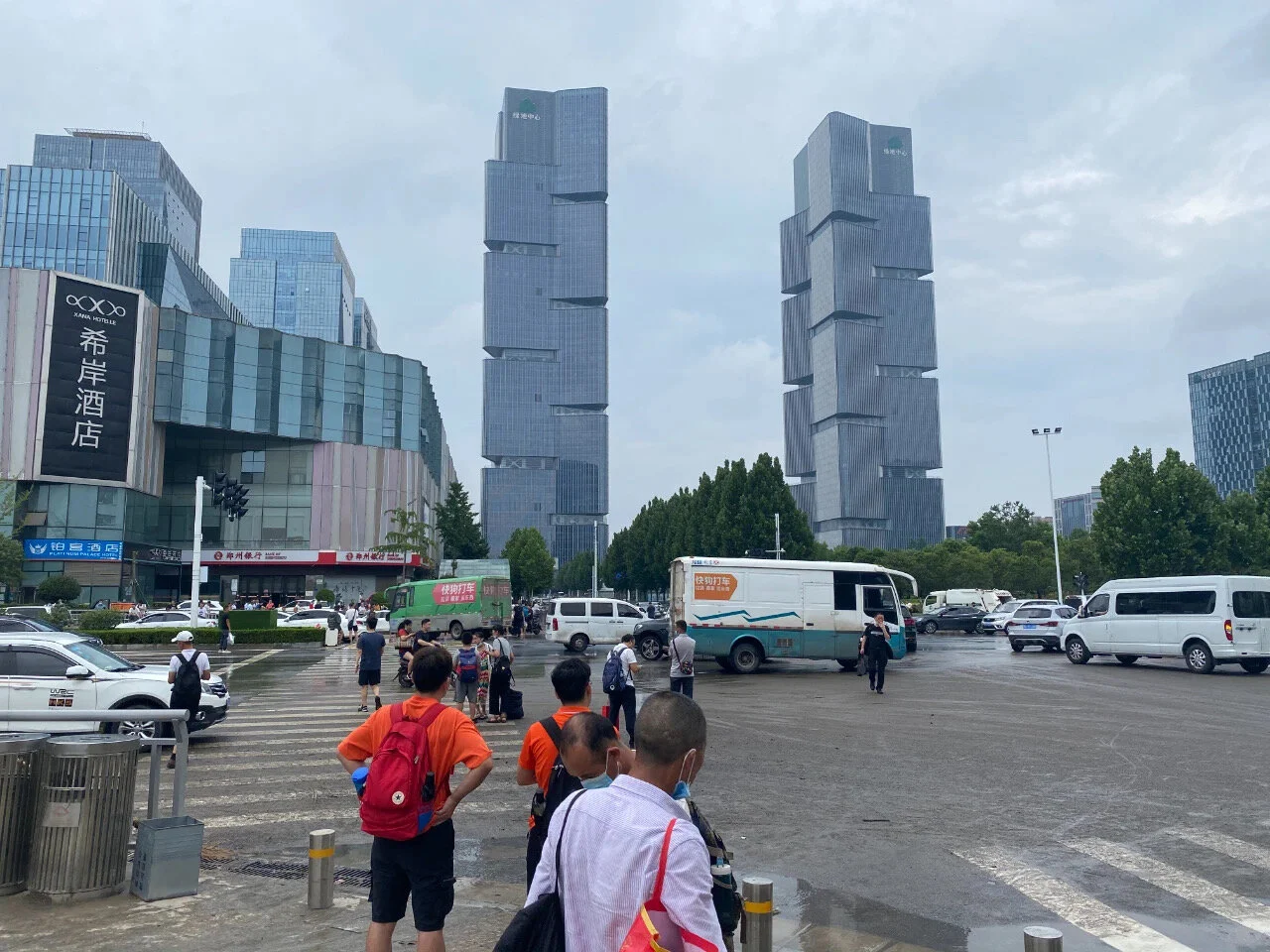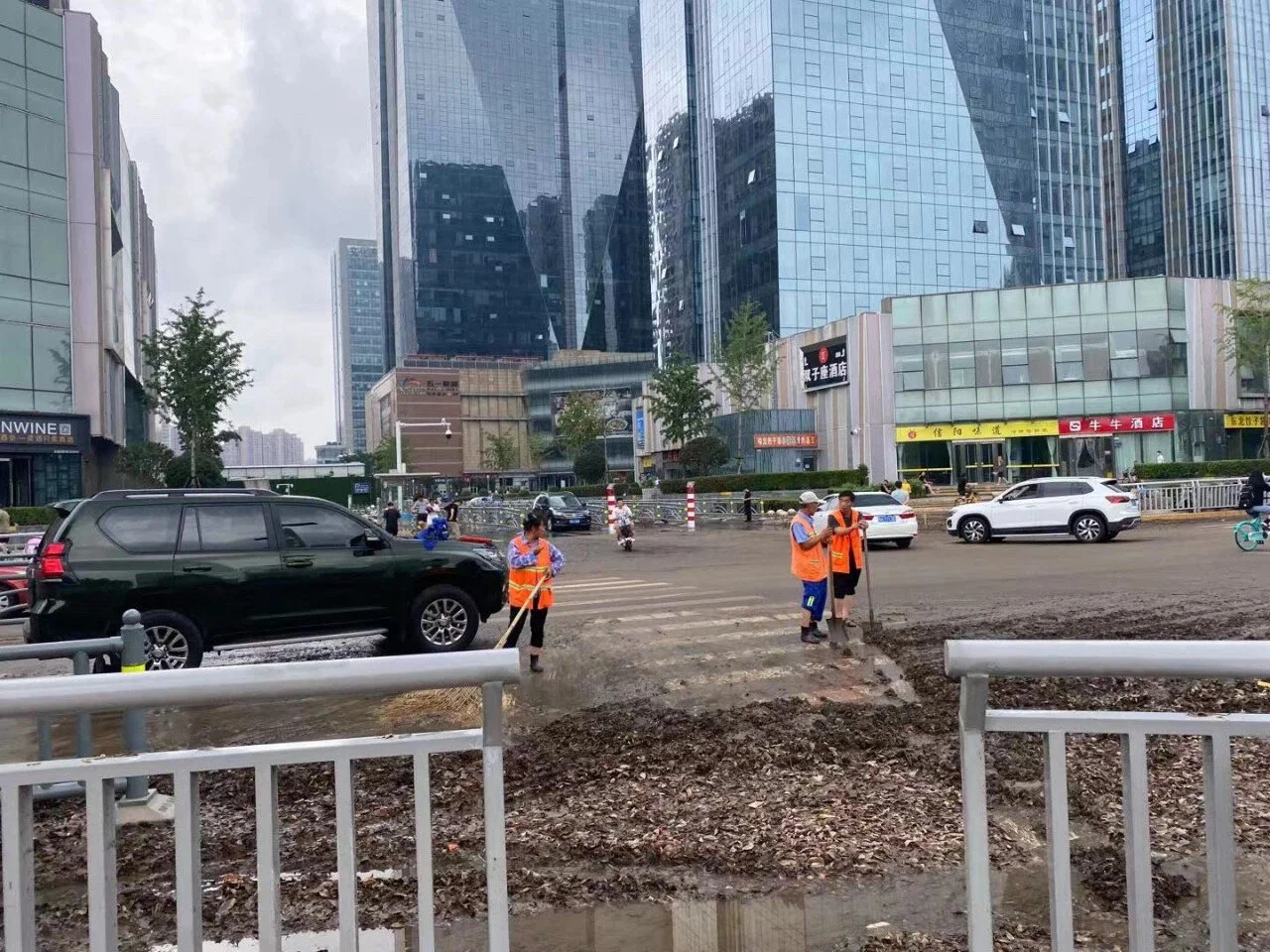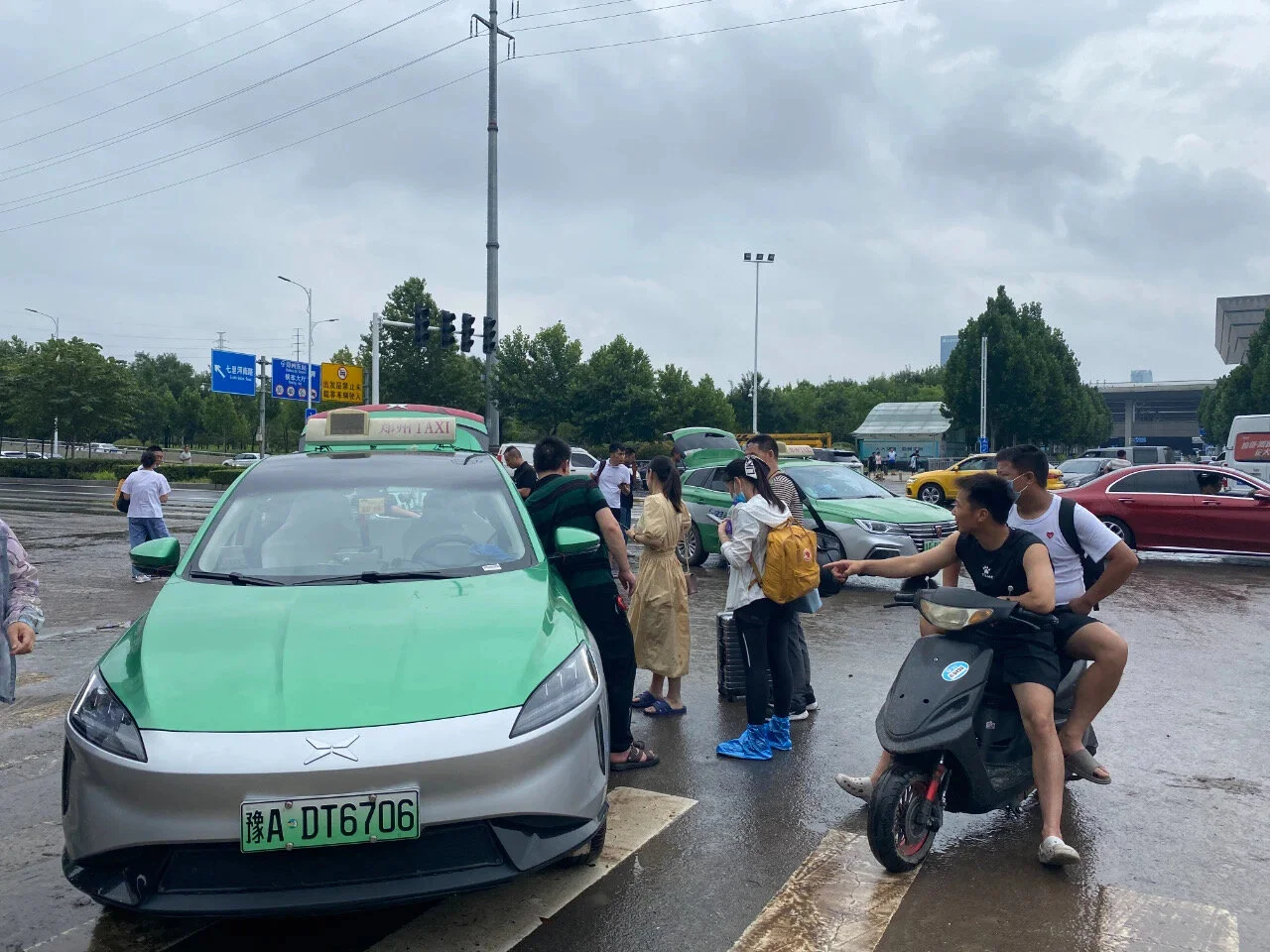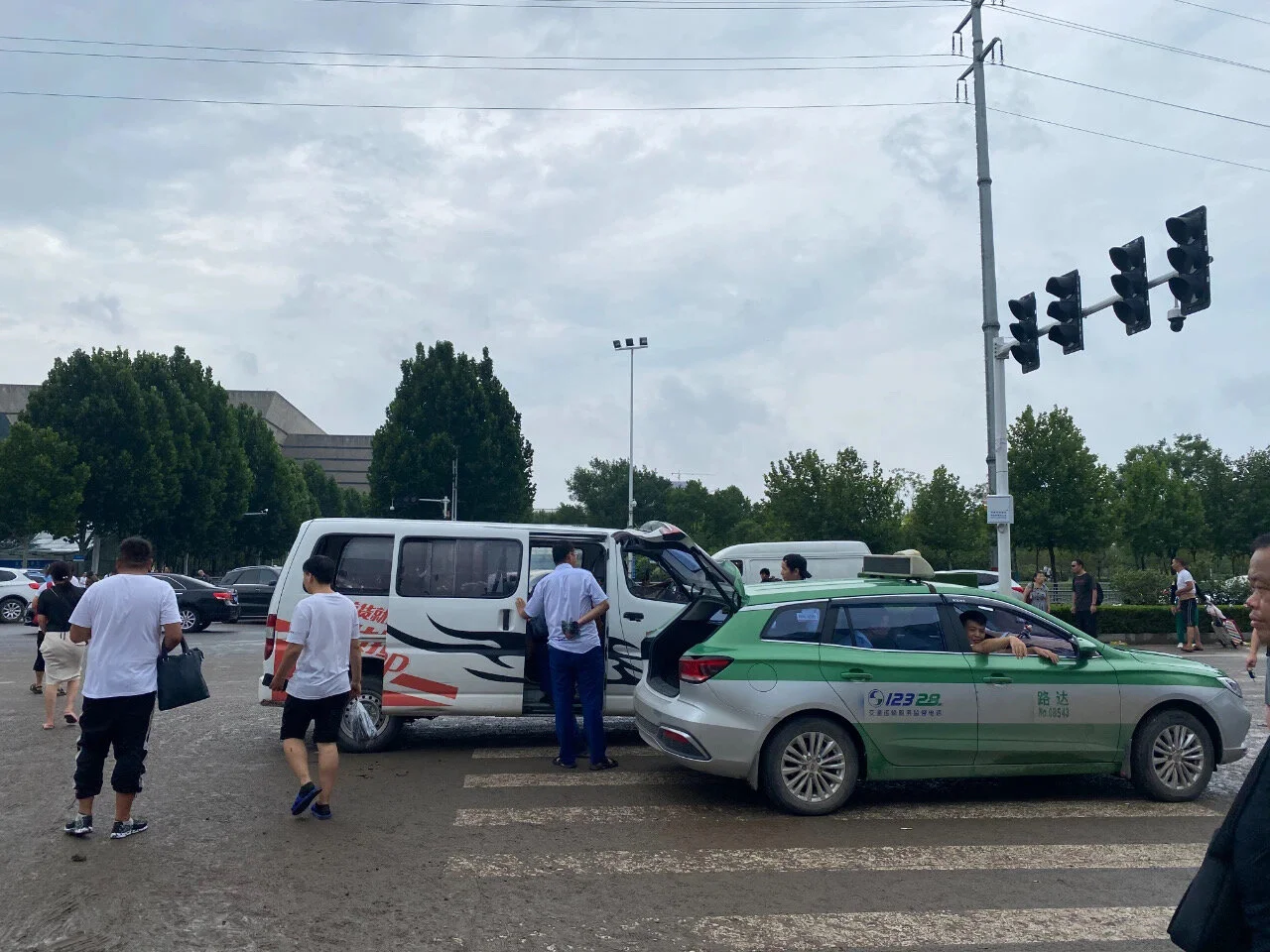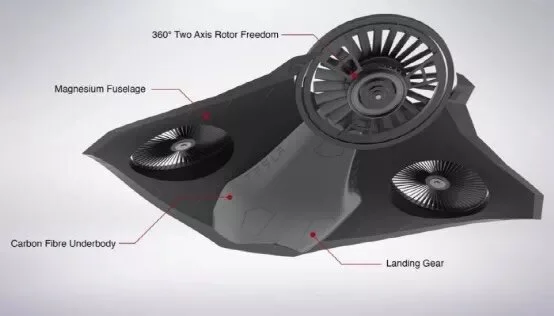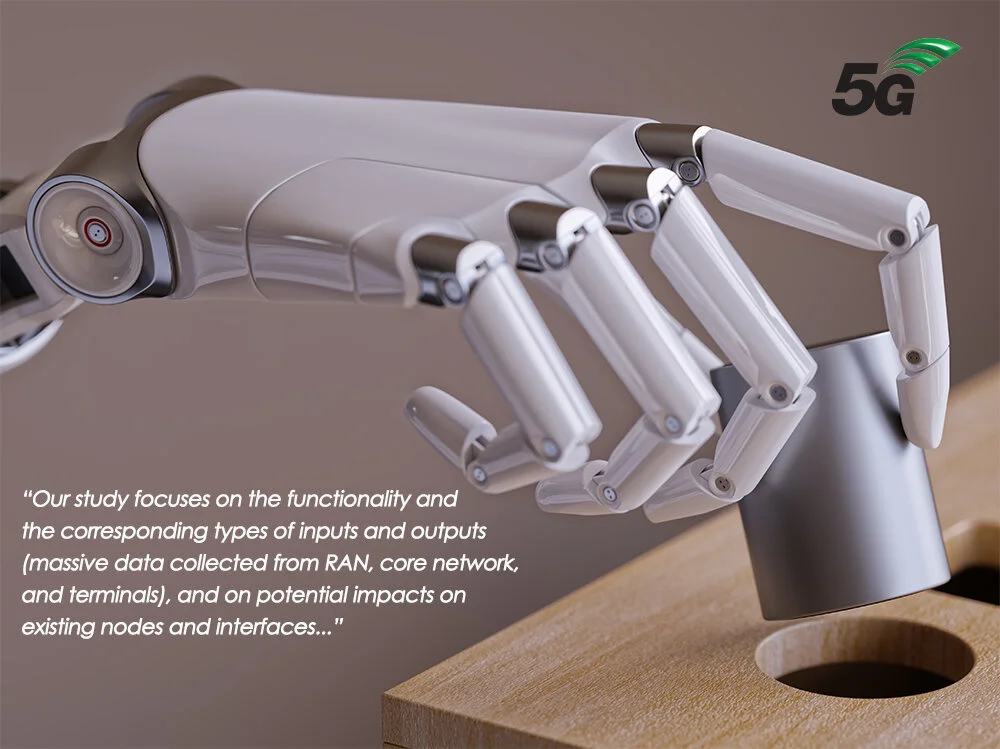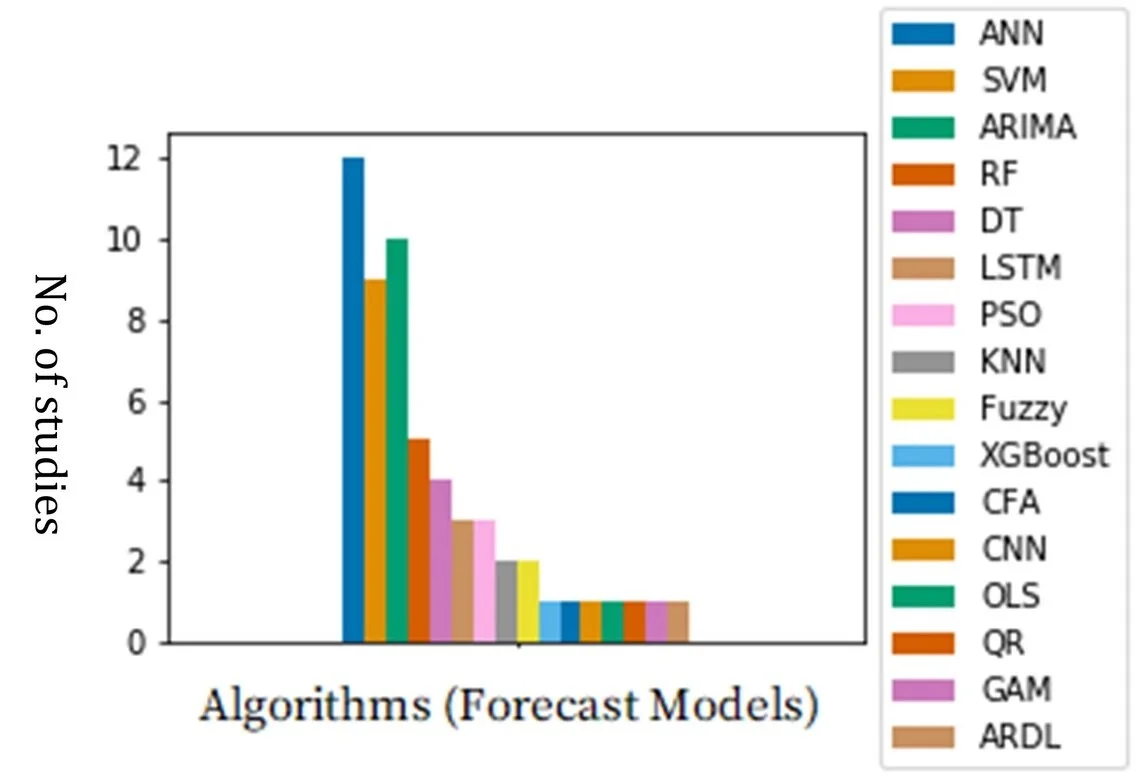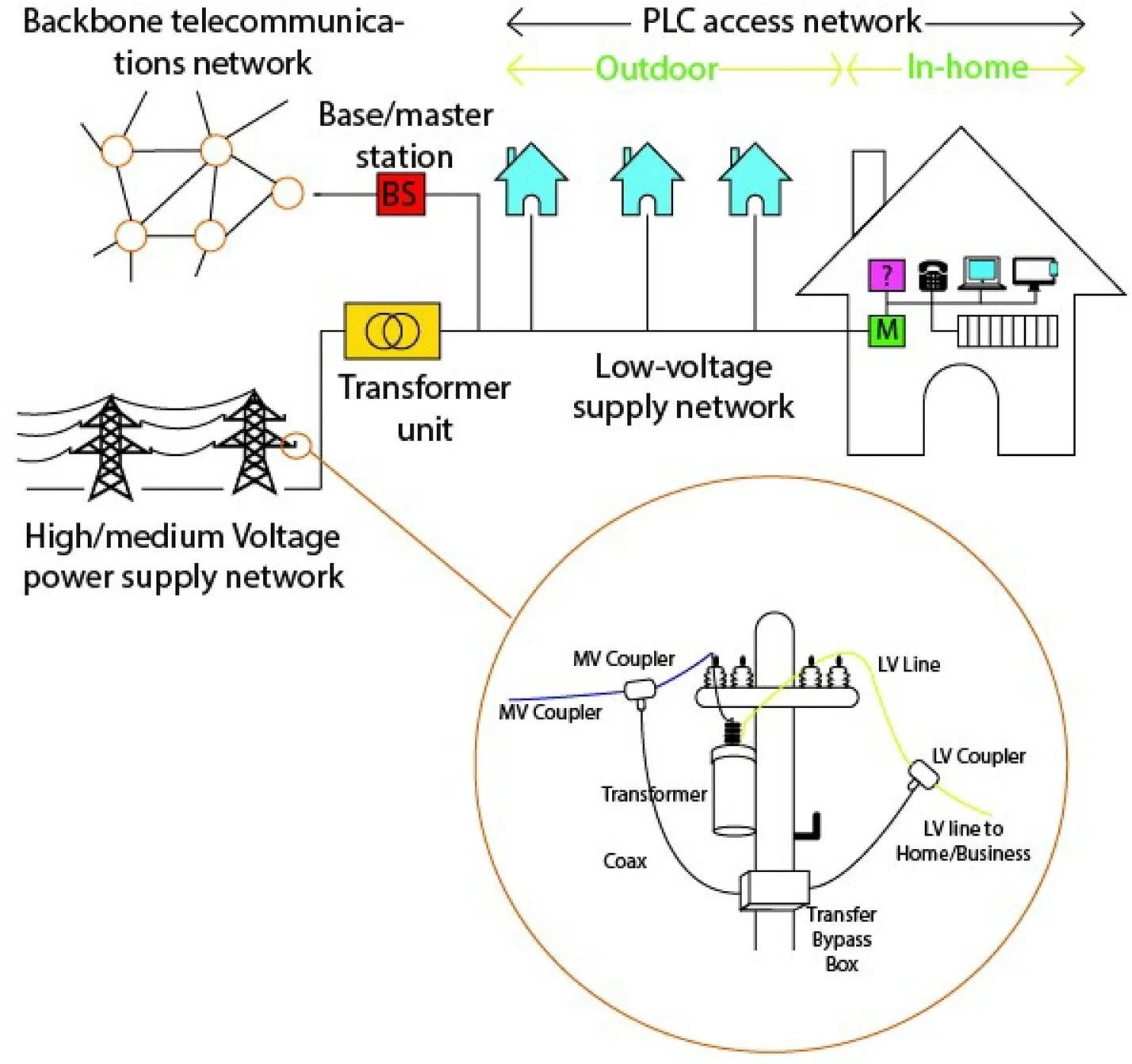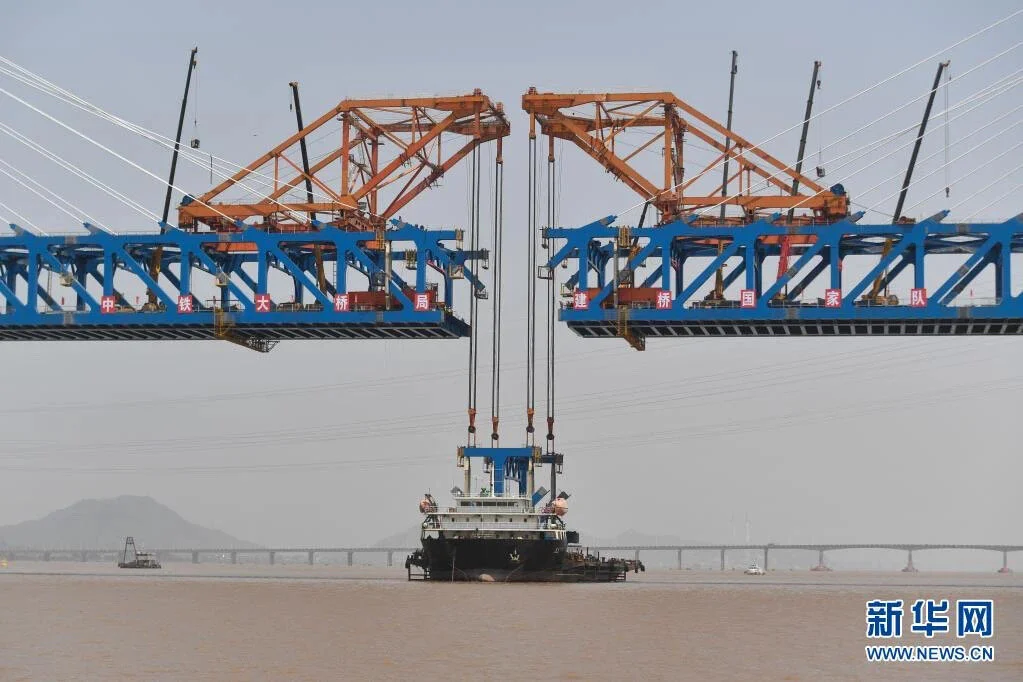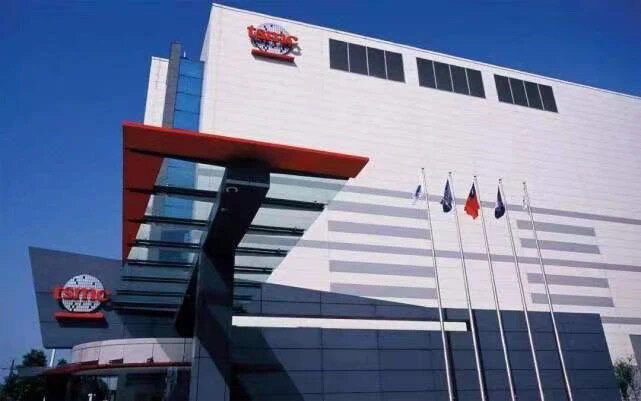Lack of Vehicles Chips Made Japanese automakers in the United States stop work for two weeks. ..
International Electronic Commerce
Japanese media pointed out that due to Malaysia chip supply problems, Nissan will continue to announce a factory shutdown for two weeks. ..
According to the Yomiuri Shimbun reported that due to the severe local epidemic in Malaysia, the supply of local chips has stalled, Japanese automaker Nissan Motor (Nissan) announced Tuesday that its vehicle plant in Tennessee will stop production for two weeks starting Tuesday and will not restart production until at least August 30.
The US plant is Nissan's main US production base, producing models such as the EV Leaf and SUV Rogue. The impact of the shutdown was not immediately clear.
Earlier this year, global automakers were forced to stop production because of a global "core" ([Inventory] Q1 2021 Global Automakers Production Reduction and Shutdown Information (With Tables))。
Recommended reading:[Inventory] Asian Electronics Industry Shutdown Status Under Q2 Epidemic in 2021 (With Tables)
Since the second half of this year, due to the spread of new coronavirus variant (Delta virus), Malaysia has been closed since June, once again to the automotive industry. In July, following the unlimited extension of the three-level movement control in Malaysia, the Philippine government also announced the implementation of the Enhanced Community Segregation Control (ECQ) in Manila, the capital circle, from August 6 to 20.
In the automotive industry, Nissan Motor Co., Ltd. (Extended reading:[Exclusive Inventory] 54 Semiconductor Plants in Malaysia (Schedule) )。
Toyota's three complete vehicle plants in Aichi prefecture, including the subsidiary, experienced delays in purchasing parts from Vietnam between late July and early August, halting some production lines for up to five days.
Honda also cited a shortage of parts in Southeast Asia and other reasons, in August production at Suzuka Production Institute (Suzuki City, Mie Prefecture) delayed seven days.
Catering Industry Transformation Driven by Consumption Upgrade
Deloitte
China’s catering industry has been integrated during the 12th Five-Year Plan period while high-grade catering consumption has been pent up, dragging down the overall industry growth. With strong consumption upgrade in 2016, the first year of China’s 13th Five-Year Plan, public catering consumption has started to grow rapidly with more diversified service targets and demands. Technological advances have also reshaped the consumption via consumers’ decision-making processes and payments. Driven by complex and changing demands as well as advancements in technology, catering, one traditional service industry, has seen a new round of opportunities for transformation and upgrading. Stable consumption growth helps strengthen the long-term positive prospect of catering market and attract more capital and crossover competitors. Deloitte believes that China’s catering industry will reach to a new stage of diversified development and competition over the next few years. Key observations of this report are as follows:
Consumption upgrade leads a rapid recovery in catering. In the trend of consumption upgrade, public catering has become the pivotal force in boosting the industry growth, as consumers are more willing to dine out. Meanwhile, the rising next generation of consumers bring more diversified demands, creating scope for growth in different types of catering categories.
Chain catering enterprises drive the entire industry to scale up and develop effectively. In recent years, chain enterprises with efficient operation and rapid expansion are taking center stages. Based on the findings of studies on these enterprises, business format/ brand innovation, digital transformation, industry chain extension and capital market operation will be the major development directions. Such measures will facilitate the industry transformation and upgrade in terms of product, service, quality and efficiency. Although the concentration of China’s catering industry remains low with a lack of enterprises at ten-billion level, there is much development space for chain catering groups and the industry is expected to see further expansion and integration.
The rise and adoption of technology promote the digital transformation of catering industry. Technology adoption, represented by the Internet, provides new channels for catering enterprises to connect with consumers and strong support for enterprise management. And thereby digital transformation proves to be one key development direction for catering enterprises. The application of emerging technologies, including big data and Internet of Things, also helps drive up the operation and management of catering enterprises.
Catering industry is more active in capital market. Catering enterprises have gained increasing attention from capital market and started engaging more actively in the capital operation. The approved IPO application of Guangzhou Restaurant puts and end to the absence of catering enterprises listing in the A-share for years, expecting to open up a new door for A-sharing listing of catering enterprises. Smaller catering enterprises have listed in NEEQ to obtain attention and support from capital. PE/VC investment for catering enterprises has also increased constantly with a sizable percentage invested in enterprises in angel rounds, reflecting investors’ optimism for catering industry. 2
Policy guidelines shall not be overlooked: tax compliance and food safety have become the regulation focus in catering industry. As the impact of policy guidelines on the industry is a major systematic risk for its development, catering enterprises need to develop prior planning with full attention to compliance issues to be not affected. Recent policies indicate that food safety has become the regulation focus while supporting the healthy industry growth; and relevant laws and regulations have been improved, tightening restrictions on enterprises. Tax and other issues caused by VAT reform also require sustained attention. For successful listing, enterprises shall advert to compliance in various aspects in early stages and avoid being impacted by non-compliance on listing progress.
Post-disaster Zhengzhou: When a City Suddenly Lost Internet
Du Qiang From Story hardcore
In Zhengzhou after the flood, a person with water, electricity and the Internet at the same time is extremely lucky.
Water outages are most widespread.In supermarkets, large bottles of drinking water have been snapped up, and the remaining small bottles have been carried away in bags.In the twenty-sevenSmall hotel near the tower, customers crowded around the front desk complaining, “It really stinks!” The boss pulled out the large plastic bucket from under his feet and pointed at the doorA deep pit of water, “Fill it up, punch it with that.”
The whole Zhengzhou City, a large area of power outages, old blocks because of aging electrical circuits can not be spared. A large number of shops along the street closed their doors, and fresh food businesses that did not close their doors sold fish and milk at a discount that could not be refrigerated. And dug out a long time did not use the spring scale, but the settlement link is often unable to complete - cash disappeared from life for too long, banks are still closed due to power outages, some even return to the original stage of "bartering."
In a fresh supermarket by the Qili River, the boss sat in front of the shop, A middle-aged man came out of a dark shop, carrying a bag of onions and small winter melon, weighing the total price of about 20 yuan.
“Cash only.”
"Can't use Alipay?" Asked the customer.
"Can you open Alipay?"
Middle-aged men don't have cash. After looking for a long time in the black leather bag, he could only hand the boss a pack of cigarettes - blue packaging, the market price of about 19 yuan. (This is reminiscent of the post-World War II economic collapse in Germany, where people used stored, easily divided cigarettes as "currency.")
Water and electricity outages exist in the memory of generations, but the sudden disruption of the Internet has turned Zhengzhou into an unprecedented testing ground. After the disaster in Zhengzhou, it is surprising that there are several meters of water in the tunnel of Longhai Road and cars floating in it. It is also in this city of 12,600,000 that the order given by Internet technology has failed, and the old order has failed.
After July 20, Zhengzhou seemed to go back to the year 2000 overnight. Where can we find an oasis of digital civilization in a city where there is no electricity or internet? Citizens are deeply disturbed by it.
Zhengzhou East Railway Station is near the water, electricity, network without the three areas. The gates at the exit gate of the high-speed railway were all malfunctioned. Passengers who needed to brush their ID cards or tickets to exit the station simply squeezed out of the gate which could not be rotated. And when they walk out of the station square, they will find that the city's main public transport, has become a bike sharing and fast dog taxi, goods Lala.
For security reasons, several major ride-hailing platforms have suspended business within Zhengzhou. Most bus lines also stop running. So you'll see passengers pulling suitcases rashly stop Shunfeng Express's van and ask the driver loudly, "do you want to pull people?" And the intersection to the southwest of the station has become a trading place. when a taxi comes empty, passengers will immediately gather around it. "you can pay as much as you say and don't turn on the meter."
But drivers don't care about the price. They always ask, “Do you have any cash? WeChat Alipay can't brush.”
The first three groups of people who came forward to inquire left disappointed. Occasionally, passengers questioned the driver's "fortune," The driver did not deliberately make a grievance expression, "I this is a new energy vehicle, this point of electricity is finished, do not know where to charge, electricity piles are waste." According to a data from Zhengzhou, more than 80% of the city's taxis have been replaced by new energy vehicles.
At noon on the 21st, hundreds of passengers stranded at the intersection in front of the station, in the crowd, bags and water between the shuttle of private cars, fast dog taxi and goods Lala occupy the absolute main force. No matter whether it is Wuling Hongguang or Jinbei, passengers do not dislike, even sitting on strangers' lap is quite tolerant.
After I decided to go to the first affiliated hospital of Zheng University, I stopped a truck with a fast dog. The driver was a middle-aged man of about 40 with a short crew cut, who looked well established. But when asked about the price of a one-way trip, he suddenly became shy. "How much did you say?" After some pushback, I realized that he was new to this sudden new business. He pulled out his phone. "I'll see how far it is on the Gaudet map." But a minute later, he said, "No net."
After the development of Internet technology, city dwellers have become accustomed to the order it shapes, it defines the flow of transactions, Even the sense of trust between people is also built on the mechanism of Internet products, you will not worry about Taobao shop owner wrong money, nor for Didi driver detour and anxiety, lost mobile phone seven or eight out of ten can be found back. But on July 21st in Zhengzhou, I tried cautiously with the fast dog driver, as if trying to recover a skill that had been unfamiliar for many years.
This unprecedented situation is a test for the citizens of Zhengzhou. It seemed to me that they behaved very civilly. Beneath the malfunctioning traffic lights, the drivers were politely courteous, you might even say with a touch of shyness in their smiles. When a taxi stopped at the East Railway Station Square, the passenger got off and found that he did not have the cash, he repeatedly apologized, the driver just waved his hand, hit the steering wheel and headed east.
There are angry and angry situations, of course, but they can be forgiven depending on the plot. In Dongzhan South Road, a guy with a camouflage backpack tried to scan a Meituan bicycle. After many attempts to no avail, he was sweating heavily. He held up his phone and twirled it around in vain, like the African immigrant in Horsey's Gold Award photography "The Signal." A few minutes later he threw two punches at the QR code of Meituan Bicycle.
After the floodThe Streets of Zhengzhou
There are nearly 100 shared bikes scattered around South Dongzhan Road, Meituan, Green Orange and Hello were divided into three groups. In half an hour, more than 30 people tried to scan the code, but only two of them caught the weak signal. A student like young man successfully scan the code, humming the Divine Comedy, "riding my beloved bicycle..." More people are left to look around for an Internet product more suited to the moment of failure - a shared bike with a broken lock.
In such extreme cases, newer may not necessarily mean better. Meituan Bicycle has launched a new generation of bicycles in Zhengzhou, giving up the traditional lock. The new lock probably applies the principle of electromagnetism. When returning the car, it still needs to scan the code and determine whether it is located in the designated parking space by the system. However, the extra network communication makes the people of Zhengzhou very annoyed at the moment.
On the other hand, some seemingly primitive technology may come in handy. An emergency guide circulated among media groups ahead of the flood suggested a technology that could send content directly to 1069009009 without a 4G signal for help on Weibo. The microblogging system has left a lifeline through the 2G network.
Just like Zhengzhou,The original city is not prepared for more than 500 millimeters of precipitation a day, Most Internet technology companies add more and more sophisticated designs to the foundation of network communications, but who knows what happens when that foundation is gone without one.
The passenger is inquiring about the taxi
The Internet is the new infrastructure, the hydroelectric coal of our age. There is nothing false about that. This is especially unlikely when you continue to walk west along South East Railway Station Street and see bewildered crowds holding mobile phones.
Shops along the route are mostly closed, especially large chains such as McDonald's, and small stores are still open.
"Hello, I booked on Ctrip." I said to the receptionist at a small hotel called Yi Lai.
"Ctrip?" She pointed to the computer in front of her. "I have no power now. Where can I see where you booked me?" Under her hand was a paper form, each room number drawn with thick lines. A steady stream of customers came in, many went to the front desk,Take a look.Eye yellow, green all kinds of shared charge treasure, and turned away.
3 km west, power restored after passing the Green Center. At a lamb soup restaurant, the boss told me that I can't order a takeaway now. “We didn't stop Meituan. We turned it off manually. It's just a list. 40 minutes without a rider, then the guest will return, the meal has already been done, we still have to bear the loss. Just turn it off.”
Without the Internet, life has to be readjusted everywhere. However, people who are not in it seem to have been unable to understand the feeling of not having a network.
On the evening of the 21st, Meituan sent a text message, “To ensure the convenience of public access in extreme weather, Meituan Bike will ride for free in Zhengzhou from 21st to 28th, the fee you paid has been refunded to the original account. Special reminder, before riding make sure the road and vision is good, standing water section, do not wade through water. Weather share, Zhengzhou refueling!”
After I received the message, I wanted to give my good friends a hug and thank them for their thoughtfulness, but also to whisper in his ear, stupid, the problem is not money at all.
In the evening, Zhengzhou began to rain heavily again. After 8: 30, wearing a raincoat, I rushed from the Provincial People's Hospital to my hotel near Zhengxing Street. The street lights and traffic lights along Renmin Road were all extinguished. The vision and road conditions were very bad. During the 40-minute walk, more than a dozen shared bikes were encountered along the way, but there was still no Internet, so we could not scan the code.
I turned on the lights on my phone and stared at a GoDaddy map downloaded offline as I walked. After the flood, Gold Online Storm Help function, in the emergency location, will show a red mark on the map. But if you are not in the oasis of the Internet, you have no idea to open it. Friends in Beijing can use it, but they don't need it.
According to the map information, I walked to the Erqi Tower nearby, after turning a fence, was stopped by a figure.
"Brother don't go, there is a big puddle in front, you can't pass." He looked older than me, but it was so dark then.
"Walk around that side, can pass, you watch the puddle, don't step on." He continued.
I thanked him and asked if he was a government worker.
“No. I live nearby and I knew there was a big pit. I thought no, I stood here for a while.” He saw the map in my phone. "Don't just look at that. It doesn't work now."
There is no doubt that until power and Internet are restored, the slow restoration of order in the city of Zhengzhou depends on ordinary people, the truckers, the street cleaners, The dedicated traffic police, as well as the hotel downstairs for passers-by to open a free Internet hotspot waitress, is the Internet technology developed before we have empathy, responsibility, and even for self-interest purposes. Not to be nostalgic or defensive about these "primitive" things, but to be honest, because of the advanced technology, the fine governance, sometimes I have almost forgotten them.
In the afternoon of the 21st, in a small square near Dongnan Road, I met Zhang, a resident nearby. He had not been out for two days and was sitting on the steps looking out. He told me about the difficulty of water and power outages nearby, talking about the floating cars in the culvert not far away, but finally concluded, "Henan people are afraid of what, disasters see much."
For two days, Big Brother Zhang did not dare to use his mobile phone, “There is only (percent) more electricity left. But it also saves electricity, no internet.”
"So what do you think about the news and the government circulars?" I asked.
“I was told by others (neighbors) that there was another flood discharge. We're all very close.”
Since the floods, most of the city government's information has been transmitted through the Internet. Television stations have also had related news, but it is the same old problem. There is no electricity and no Internet. It is probably impossible to estimate how many people are thus isolated from important information.
Now Zhang Eldest Brother is worried, worried about mobile phone battery can not contact home, intend to drive back, and worry about the road is not safe.
He was originally from Xuchang and worked hard in Zhengzhou for many years. The youngest daughter is now 3 and has only been back to her hometown twice. "I always want to go back, let the old see the children, my wife is afraid of going back to the trouble, always said WeChat video to see on the line, the same."
"How can that be the same?" "It's definitely different," he said.
Looking at the global "flying car", is human flight far away?
Electronic Engineering Album
EVTOL, manned drones, flying cars, this is the same product of the future. It will address ground traffic and provide a second airspace for low-altitude traffic flights. It will also be a transitional phase for humans into space. Are flying cars reliable? What is the status and when will it become widespread?
More recently, Tesla has been blasted or moved into the flying car market, once again pushing manned drones to the forefront of technology.
allBall Flying Cars Inventory
We don't know much about flying car companies and products. However, more than 200 companies worldwide have been developing and testing vehicles, the longest for more than a decade. This section mainly takes stock of flying cars and companies that have been tested, products, designs, or more famous. The following rankings are in no particular order and do not represent market position or technological leadership.
Tesla may enter board, flying cars may start popular
According to reports, investment bank Morgan Stanley recently released an investment research report, the target price of Tesla shares at 900 dollars, continue to maintain its stock "overweight" rating. Morgan Stanley analyst Adam Jonas. Jonas said in the report that he did not believe Tesla would not enter the "electric vertical take-off and landing vehicle" (eVTOL) market.
Tesla CEO Elon Musk did not really talk about eVTOL, Jonas said. And, when asked about eVTOL, he dismissed the "flying car."
But, given that Tesla is aggressively "industrializing" electric cars, self-driving cars, battery storage, connected car networks and electric vehicle infrastructure, he's not convinced Tesla has no interest in eVTOL, the technologies are just too close.
Jonas even thinks it's no longer a matter of "if" Tesla will enter the eVTOL market, but "when."
The above picture is a rendering of the Tesla flying car, from the point of view of industrial design, is indeed "Tesla": cutting-edge technology, industrial design first-class. And true aerodynamics. However, it is not clear where people will be "loaded."
Volocopter, Germany, urban air traffic trailblazer
Micron Technology, Inc. (NASDAQ: MU), its strategic investment entity, Microns Ventures, announced on October 24, 2019. (NYSE: VW) Ventures is participating in a Series C investment in urban air traffic trailblazer Volocopter. Volocopter Is a manufacturer of electric vertical take-off and landing aircraft that meet today's safety standards for air transport and exceed those for helicopters. Volocopter is seeking to commercialise an autonomous and on-demand air taxi service.
Extended air traffic
As a growing population moves to cities, existing traffic patterns face limits. The need to find a solution inspires Volocopter Such as the explosive innovation and disruptive growth of private enterprises. The Germany-based start-up has been experiential testing its air taxi technology for almost a decade, with its electric vertical take-off and landing (eVTOL) Airplanes not only meet the need to constantly reinvent the transportation systems of megacities, but also provide people with new ways to commute.
“Volocopter Is a wonderful company dealing with a favorable position in driving change in the transportation and transportation market and contributing to building sustainable and environmentally friendly transportation infrastructure, ” René, Vice President, Corporate Business Development, Micron Technologies Hartner said. “Micron in Volocopter Uber's investment is consistent with our view that memory and storage solutions play a key role in enabling the breakthrough capabilities required for autonomous vehicles and edge computing. ”
Micron is the largest supplier of memory to the automotive industry and its high-performance solutions facilitate the development of autonomous driving, virtual reality and air travel. MicronVenture vs. Volocopter Micron's investment reflects its continuous search for new and innovative solutions.
"We are proud to partner with Micron to realize our bold vision of making urban air traffic a reality," Volocopter CEO Florian Reuter Said.“Volocopter Will help major cities transform their transport infrastructure and thus move towards a more sustainable future. Our goal is to provide affordable, automated, on-demand air taxi services to pick up and drop off passengers in megacities - all for the cost of a taxi ride and significant time savings. ”
In addition to air taxis, Volocopter is developing an ecosystem for urban air traffic while working with the European Union's Aviation Safety Agency to seek Class I certification for use in commercial transport. This work includes building connectivity VoloCity aircraft with major downtown transportation hubs such as airports and business districts for VoloPorts.
In addition, Volocopter has the VoloConnect Long Way concept aircraft and logistics drones:
Volocopter is doing well in Singapore, Southeast Asia and Europe.
In July 2017, Volocopter collaborated with the Dubai government to explore smart city air traffic;
Volocopter makes its first flight in the European city of Stuttgart on October 8, 2019;
Volocopter, Urban Air Traffic (UAM), December 9, 2020 Announced a commitment to work closely with Singapore / Bruhsar City to launch air taxi services in Singapore after two years. Volocopter works with the Economic Development Board of Singapore (EDB) and the Civil Aviation Authority (CAAS) Air taxi services in the Southeast Asian city-state are planned for the next three years;
On June 21, 2021, Volocopter 2X made its first flight at the French Air Show and is expected to become one of the Paris air taxis in 2024.
June 24, 2021 The European Union's aviation safety agency issued its first certificate in a new program under which drone manufacturers or operators can ask the agency to verify the design of drones used for specific purposes. The first such certificate was granted Volocopter VC200-2;
Japan Airlines partners with Volocopter to launch flying car service in 2025
In January 2021, a French company, FLY-R, designed a prototype of a new "biplane" drone. It features a unique diamond wing design that claims to be able to bring some distinct advantages.
In the latest display of the R2-150 The prototype is formed by a pair of front wings disposed at a low point, and a couple of rear wings disposed high, The front wings sweep back and the rear wings sweep forward and tilt down, so they join the front wing at the tip. It's almost a biplane, except the ends of the upper and lower wings are pinched together.
FLY-R The company, based in the Indian Ocean on the French island of Reunion, says the diamond design is superior to conventional wings in many ways. First, the wingspan has been cut by about half, and aerodynamic drag has been reduced. In addition, the structural mass has been reduced by about a third, and the aircraft remains stable over a wide range of speeds and is highly maneuverable.
Currently battery-powered R2-150 Is designed for completely autonomous missions such as surveillance, observation and reconnaissance. It has a wingspan of 1.5 meters (4.9 feet), a cruising speed of 115 kilometers per hour (71 miles per hour) and can fly for two hours per charge -- transmitting live video as it flies.
Other models are designed to go farther, carry heavier payloads and fly faster. For example, the jet-powered R2-HSTD plans a top speed of Mach 0.65 (803 km / h or 499 mph). It is intended as a target drone, for use in military exercises.
FLY-R even has plans for a short- and medium-range passenger aircraft, named the Crystal CR-1200. FLY-R Crystal The CR-1200 should be able to carry items weighing up to 800 kilograms (1,764 pounds). The aircraft can accommodate two pilots and eight passengers (although other configurations may be available), It will feature a hybrid system in which a fuel-burning generator will recharge an onboard battery pack, which in turn will power an electric motor for two push-back propellers. At its cruising speed of 350 km / h (217 mph), It can travel more than 1,000 kilometers (621 miles) without refueling -- a figure that would increase if it was not carrying the maximum possible payload.
Read More
Grid Core $100m Expands New York Plant, CEO Quashes Intel Takeover Rumors, Says IPO Will Go Ahead
U.S. semiconductor maker Global Foundries will build a second plant near its headquarters in Malta, New York, and invest $10 million to boost capacity to ease a global chip shortage, the company said Monday. Also participating in the day were U.S. Secretary of Commerce Gina Raimondo (Gina Sen. Chuck Schumer (D-N.Y.) and Sen. Raimondo (R-Mo.).
Meanwhile, in response to the recent "Wall Street Journal" reported that Intel (Intel) is ready to buy Grid Core for $30 billion, Gridcore CEO Tom Caulfield also denied on the spot and will continue to seek an IPO listing.
During the IPO, you'll see all kinds of rumors
Thomas Caulfield said the Intel deal was speculation and denied there had been such discussions. “We did not open any discussions on this. You're likely to see a lot of speculation as the company moves ahead with its IPO plans.”
From the grid core aspect of the response, they deny Intel's $30 billion acquisition news, whether it is really unaware or can not admit. However, it has also been reported that Intel's acquisition is likely to cross the grid core company and the parent company - the United Arab Emirates Mubadala Investment Fund (UAE) to talk, The latter burned tens of billions of dollars on grid cores.
But the focus of Mubadala is still to push Grid Core to go public according to established plans, people familiar with the matter said.
Intel 300000000000 US dollars to acquire Grid Core has a great impact, not only will reshape the global wafer foundry market pattern, For AMD is also at stake, grid core is still their important long-term OEM partner, if bought by Intel, the relationship will be somewhat troubled.
NH Investment & Securities analysts said the grid core could still be attractive to Intel despite its lack of up-to-date production processes, Business Korea reported. In the long-term development of the company, Grid Core accumulated a wide range of customers, IP and technology patents, which created a high asset value for its. For potential deals, these factors are as important as production processes, the agency argues.
Also, given that Intel's corporate culture and customer relationships revolve around its dominance of the PC and server CPU markets, it would be difficult for the company to re-enter the foundry space if it relied solely on process technology. The combination of Grid Core's assets and Intel's production processes will provide the necessary synergies for the foundry market.
The agency noted, however, that if the deal is finalized, competition in the foundry industry will become more intense, affecting incumbents such as Samsung and TSMC.
As for the expansion news, the grid cores are still in place a day early Official Account message template On sold a customs son, let a person think will announce and Intel, we did not expect to wait for the announcement of a new grid core brand and expansion of the news...
Grid Core said in its official news release that it will invest $10 million to immediately add 150,000 wafers a year to its existing Fab 8 fab to help solve the global chip shortage. Grid Core just moved its headquarters from California to New York earlier this year.
Later, Grid Core plans to build a new fab that will create more than 1,000 direct high-tech jobs and thousands of indirect jobs in the region, including high-paying construction jobs. According to Fab 8's successful investment model, Grid Core plans to fund new facilities through a public-private partnership that includes customer, federal and state investments. This additional capacity will meet growing demand for secure, feature-rich chips in high-growth markets including cars, 5G connectivity and the Internet of Things.
"There has been a chip shortage for 15 years." Thomas Caulfield said at the launch. These investments aimed at expanding Grid Core's U.S. manufacturing footprint are part of the company's broader global expansion plans, These include the recently announced new plant in Singapore and the planned $10 billion expansion of capacity in Germany, all to meet growing demand from customers worldwide.
Grid Core employs more than 15,000 people worldwide, 7,000 in the United States and nearly 3,000 at its headquarters in Malta, New York. Over the past decade, Grid Core has invested more than $15 billion in its Fab 8 plant to support innovation and increase production capacity.
Apple’s Vertical Integration
When Apple was preparing a metal case for the MacBook, Apple's chief designer Jony Ive thinks there is a huge problem with metal: It doesn't transmit light. That means adding a light to the MacBook, such as a laptop breathing light, would require more holes in the metal, but Ive thinks too many holes would be unsightly.
According to legend, Ive put together a team to work specifically on this problem. They discovered that tiny holes drilled by lasers into aluminum metal could allow light to come through -- and no one could see the holes. Apple didn't have the ability to do this on its own at the time, but market research revealed that a company in the United States had lasers capable of punching holes 20 μm in diameter at a cost of $250,000. So Apple bought the company.
Just to let aluminum metal can be transparent and take into account the beauty of this one thing, there is such a big move. Although the technology is no longer rare, the legacy of that acquisition can still be seen on devices like Apple's TrackPad.
Apple doesn't do this kind of thing once or twice: chip, display (LTPO, microLED), sensor (Face ID / Touch ID), brake (Taptic) (Engine) and other technologies, is a word against the acquisition. Like just for Face on the iPhone X ID, Apple for this acquisition of related enterprises at least include 3D sensing technology enterprise PrimeSense, camera module manufacturer LinX, AR company Vrvana, image sensor supplier InVisage Tech, AR eyewear manufacturer Akonia Holographics and others.
Apple now makes (or co-manufactures) its own chips and components, unlike its upstream suppliers, in that they are not for sale, but for its own consumer end products. One of the big differences between Apple's thinking and that of regular consumer electronics manufacturers is that there are functional / performance requirements first and then trying to figure out a solution - if you can't find one, try to build it yourself or help upstream manufacturers build it together. This line of thinking seems to have been handed down from Apple's earliest days.
EE Times USA has written an article in 2018 entitled Apple Goes Vertical & Why It The Matters article describes how Apple can acquire, invest, build its own team, and cooperate hard and soft to achieve a particular feature. Like Face. ID, not only to acquire a bunch of related image sensors, optical technology enterprises, but also to add the Neural Engine module in the chip, and to cooperate with the previous Secure Enclave, and support is most rapid at the system and software level.
Google predates Android Era 4.0 (2012) has done face recognition features in the operating system level, but both from the optical and sensor recognition level, Or chip TEE environment, system implementation, are far from the user experience ready - Google as an operating system supplier, does not have Apple's vertical integration capabilities, natural experience and security discount. This is a typical example. What's more scary is that Apple usually builds a technology that is mature and then can fire up the technology and even the chain, structured light and 3D. ToF has this component (although it often fails, such as 3D touch).
Open RAN
As 5G is being deployed all over the globe, one of the new trends drawing a lot of attention is the Open RAN, which has been selected by a number of major operators for their 5G deployments.
Open RAN is made possible through standardized open network interfaces, defined in 3GPP, O-RAN Alliance, IEEE, and other SDOs and industry fora. To cater to all the diverse 5G use cases and operator’s deployment constraints, the standards define multiple NG-RAN architecture options and the associated open network interfaces. While these options are crucial in making 5G suitable to address all the requirements and challenges of the next generation mobile network, figuring out which option fits a particular practical use case is sometimes challenging. This is further exacerbated by the fact that relevant standards are scattered across multiple SDOs.
To help experts to unpack that complexity, Sasha Sirotkin, the 3GPP RAN3 Vice-chair has edited a new book ‘5G Radio Access Network Architecture: The Dark Side of 5G’, with material contributed by a number of domain experts, active in various 3GPP working groups.
The following material is provided by Sasha and the publisher Wiley-IEEE, as a short introduction to the topic.
Monolithic vs. split architectures
When discussing the 5G RAN architectures, we often talk about functional splits – as opposed to the “monolithic” architecture in which a gNB is defined, and often implemented, as a single network node. The assumption that split architectures are unique to 5G is not entirely correct. Even though 3GPP defined the 4G eNB as a single monolithic logical network node, in practice deployments with Remote Radio Heads (connected via CPRI) were rather popular. And of course, there was the FAPI specification from the Small Cell Forum for LTE, not to mention various proprietary split implementations.
What’s new in 5G
With the advent of 5G, the industry realized the need for better standardization of RAN in general, and functional splits in particular. During the 5G study in Release-14, 3GPP have considered multiple split variants, illustrated by the figure below.
After extensive discussions, 3GPP have reached the consensus to define two NG-RAN split architectures (in addition to the traditional “monolithic” one):
the high-level CU/DU split (option 2),
and NG-RAN architecture with separated control and user plane functions.
Naturally, Small Cell Forum also evolved their FAPI specification (option 6) to support 5G, while O-RAN Alliances defined the low-level split (option 7). Furthermore, CPRI specification was enhanced (and is now referred as eCPRI) to support not only option 8, but also higher splits. This joint effort across multiple SDOs is a testament to the importance of Open RAN to the whole industry, which is now enabled through the definition of open standardized network interfaces between the split NG-RAN network nodes.
Artificial Intelligence and Machine Learning
By Gino Masini, Yin Gao, Sasha Sirotkin
5G brings more stringent requirements for Key Performance Indicators (KPIs) like latency, reliability, user experience, and others; jointly optimizing those KPIs is becoming more challenging due to the increased complexity of foreseen deployments. Operators and vendors are now turning their attention to Artificial Intelligence and Machine Learning (AI/ML) to address this challenge. For this reason, following RAN plenary approval, 3GPP RAN3 has recently started a new Release-17 study on the applications of AI/ML to RAN.
AI can be broadly defined as getting computers to perform tasks regarded as uniquely human. ML is one category of AI techniques: a large and somewhat loosely defined area of computer algorithms able to automatically improve their performance without explicit programming. AI algorithms were first conceived circa 1950, but only in recent years ML has become very popular partly due to massive advancements in computational power and to the possibility to store vast amounts of data. ML techniques have made tremendous progress in fields such as computer vision, natural language processing, and others.
ML algorithms can be divided into the following types:
-Supervised learning: given a training labeled data and desired output, the algorithms produce a function which can be used to predict the output. In other words, supervised learning algorithms infer a generalized rule that maps inputs to outputs. Most Deep Learning approaches are also based on supervised learning.
-Unsupervised learning: given some training data without pre-existing labels, the algorithms can search for patterns to uncover useful information.
-Reinforcement learning (RL): unlike the other types, which include a training phase (typically performed offline) and an inference phase (typically performed in “real time”), this approach is based on “real-time” interaction between an agent and the environment. The agent performs a certain action changing the state of the system, which leads to a “reward” or a “penalty”.
Perhaps the most obvious candidate for AI/ML in RAN is Self-Organizing Networks (SON) functionality, currently part of LTE and NR specifications (it was initially introduced in Rel-8 for LTE). With SON, the network self-adjusts and fine-tunes a range of parameters according to the different radio and traffic conditions, alleviating the burden of manual optimization for the operator. While the algorithms behind SON functions are not standardized in 3GPP, SON implementations are typically rule-based. One of the main differences between SON and an AI-based approach is the switch from a reactive paradigm to a proactive one.
The study has just begun, and at the time of writing we can only provide initial considerations. According to the mandate received from RAN, our study focuses on the functionality and the corresponding types of inputs and outputs (massive data collected from RAN, core network, and terminals), and on potential impacts on existing nodes and interfaces; the detailed AI/ML algorithms are out of RAN3 scope. Within the RAN architecture defined in RAN3, this study prioritizes NG-RAN, including EN-DC. In terms of use cases, the group has agreed to start with energy saving, load balancing, and mobility optimization. Although the importance of avoiding a duplication of SON was recognized, additional use cases may be discussed as the study progresses, according to companies’ contributions. The aim is to define a framework for AI/ML within the current NG-RAN architecture, and the AI/ML workflow being discussed should not prevent “thinking beyond”, if a use case requires so.
Stay tuned for further updates as the study progresses in RAN3, or consider joining us in our journey into the “uncharted” territory of AI/ML in NG-RAN.
Electricity load forecasting: a systematic review
Isaac Kofi Nti, Moses Teimeh, […]Adebayo Felix Adekoya
Journal of Electrical Systems and Information Technology
Abstract
The economic growth of every nation is highly related to its electricity infrastructure, network, and availability since electricity has become the central part of everyday life in this modern world. Hence, the global demand for electricity for residential and commercial purposes has seen an incredible increase. On the other side, electricity prices keep fluctuating over the past years and not mentioning the inadequacy in electricity generation to meet global demand. As a solution to this, numerous studies aimed at estimating future electrical energy demand for residential and commercial purposes to enable electricity generators, distributors, and suppliers to plan effectively ahead and promote energy conservation among the users. Notwithstanding, load forecasting is one of the major problems facing the power industry since the inception of electric power. The current study tried to undertake a systematic and critical review of about seventy-seven (77) relevant previous works reported in academic journals over nine years (2010–2020) in electricity demand forecasting. Specifically, attention was given to the following themes: (i) The forecasting algorithms used and their fitting ability in this field, (ii) the theories and factors affecting electricity consumption and the origin of research work, (iii) the relevant accuracy and error metrics applied in electricity load forecasting, and (iv) the forecasting period. The results revealed that 90% out of the top nine models used in electricity forecasting was artificial intelligence based, with artificial neural network (ANN) representing 28%. In this scope, ANN models were primarily used for short-term electricity forecasting where electrical energy consumption patterns are complicated. Concerning the accuracy metrics used, it was observed that root-mean-square error (RMSE) (38%) was the most used error metric among electricity forecasters, followed by mean absolute percentage error MAPE (35%). The study further revealed that 50% of electricity demand forecasting was based on weather and economic parameters, 8.33% on household lifestyle, 38.33% on historical energy consumption, and 3.33% on stock indices. Finally, we recap the challenges and opportunities for further research in electricity load forecasting locally and globally.
Background
Electricity is the pivot in upholding highly technologically advanced industrialisation in every economy [1,2,3]. Almost every activity done in this modern era hinges on electricity. The demand and usage of electric energy increase globally as the years past [4]; however, the process of generating, transmitting, and distributing electrical energy remains complicated and costly. Hence, effective grid management is an essential role in reducing the cost of energy production and increased in generating the capacity to meet the growing demand in electric energy [5].
Accordingly, effective grid management involves proper load demand planning, adequate maintenance schedule for generating, transmission and distribution lines, and efficient load distribution through the supply lines. Therefore, an accurate load forecasting will go a long way to maximise the efficiency of the planning process in the power generation industries [5, 6]. As a means to improve the accuracy of Electrical Energy Demand (EED) forecasting, several computational and statistical techniques have been applied to enhance forecast models [7].
EED forecasting techniques can be clustered into three (3), namely correlation, extrapolation, and a combination of both. The Extrapolation techniques (Trend analysis) involve fitting trend curves to primary historical data of electrical energy demand in a way to mirror the growth trend itself [7, 8]. Here, the future value of electricity demand is obtained from estimating the trend curve function at the preferred future point. Despite its simplicity, its results are very realistic in some instances [8].
On the other hand, correlation techniques (End-use and Economic models) involve relating the system load to several economic and demographic factors [7, 8]. Thus, the techniques ensure that the analysts capture the association existing between load increase patterns and other measurable factors. However, the disadvantage lies in the forecasting of economic and demographic factors, which is more complicated than the load forecast itself [7, 8]. Usually, economic and demographic factors such as population, building permits, heating, employment, ventilation, air conditioning system information, weather data, building structure, and business are used in correlation techniques [7,8,9]. Nevertheless, some researchers group EED forecasting models into two, viz. data-driven (artificial intelligence) methods (same as the extrapolation techniques) and engineering methods (same as correlation the techniques) [9]. All the same, no single method is accepted scientifically superior in all situations.
Also, proper planning and useful applications of electric load forecasting require particular “forecasting intervals,” also referred to as “lead time”. Based on the lead time, load forecasting can be grouped into four (4), namely: very short-term load forecasting (VSTLF), short-term load forecasting (STLF), medium-term load forecasting (MTLF) and long-term load forecasting (LTLF) [6, 7, 10]. The VSTLF is applicable in real-time control, and its predicting period is within minutes to 1 h ahead. The STLF is for making forecasting within 1 h to 7 days or month ahead [11]. It is usually used for the day-to-day operations of the utility industry, such as scheduling the generation and transmission of electric energy. The MTLF is used for forecasting of fuel purchase, maintenance, utility assessments. Its forecasting period ranges from 1 week to 1 year. While the LTLF is for making forecasting beyond a year to 20 years ahead, it is suitable for forecasting the construction of new generations, strategic planning, and changes in the electric energy supply and delivery system [10].
Notwithstanding the above-mentioned techniques and approaches available, EED forecasting is seen to be complicated and cannot easily be solved with simple mathematical formulas [2]. Also, Hong and Fan [12] pointed out that electric load forecasting has been a primary problem for the electric power industries, since the inception of the electric power. Regardless of the difficulty in electric load forecasting, the optimal and proficient economic set-up of electric power systems has continually occupied a vital position in the electric power industries [13]. This exercise permits the utility industries to examine the dynamic growth in load demand patterns to facilitate continuity planning for a better and accurate power system expansion. Consequently, inaccurate prediction leads to power shortage, which can lead to “dumsor” and unneeded development in the power system leading to unwanted expenditure [7, 14]. Besides, a robust EED forecasting is essential in developing countries having a low rate of electrification to facilitate a way for supporting the active development of the power systems [15].
Based on the sensitive nature of electricity demand forecasting in the power industries, there is a need for researchers and professionals to identify the challenges and opportunities in this area. Besides, as argued by Moher et al. [16], systematic reviews are the established reference for generating evidence in any research field for further studies. Our partial search of literature resulted in the following [10, 12, 17,18,19,20,21] papers that focused on comprehensive systematic review concerning the methods, models, and several methodologies used in electric load forecasting. Hammad et al. [10] compared forty-five (45) academic papers on electric load forecasting based on inputs, outputs, time frame, the scale of the project, and value. They revealed that despite the simplicity of regression models, they are mostly useful for long-term load forecasting compared with AI-based models such as ANN, Fuzzy logic, and SVM, which are appropriate for short-term forecasting.
Similarly, Hong and Fan [12] carried out a tutorial review of probabilistic EED forecasting. The paper focused on EED forecasting methodologies, special techniques, common misunderstandings and evaluation methods. Wang et al. [19] presented a comprehensive review of factors that affects EED forecasting, such as forecast model, evaluation metric, and input parameters. The paper reported that the commonly used evaluation metrics were the mean absolute error, MAPE, and RMSE. Likewise, Kuster et al. [22] presented a systematic review of 113 studies in electricity forecasting. The paper examined the timeframe, inputs, outputs, data sample size, scale, error type as criteria for comparing models aimed at identifying which model best suited for a case or scenario.
Also, Zhou et al. [17] presented a review of electric load classification in the smart-grid environment. The paper focused on the commonly used clustering techniques and well-known evaluation methods for EED forecasting. Another study in [21] presented a review of short-term EED forecasting based on artificial intelligence. Mele [20] presented an overview of the primary machine learning techniques used for furcating short-term EED. Gonzalez-Briones et al. [18] examined the critical machine learning models for EED forecasting using a 1-year dataset of a shoe store. Panda et al. [23] presented a comprehensive review of LTLF studies examining the various techniques and approaches adopted in LTLF.
The above-discussed works of literature show that two studies [20, 21] address a comprehensive review on STLF, [23] addresses forecasting models based on LTLF. The study in [24] was entirely dedicated to STLF. Only a fraction (10%) of above systematic review studies included STLF, MTLF and LTLF papers in their review; however, as argued in [10], the lead time (forecasting interval) is a factor that positively influences the performance of a chosen model for EED forecasting studies. Again, a high percentage of these studies [10, 12, 17,18,19,20,21,22, 24] concentrated on the methods (models), input parameter, and timeframe. Nevertheless, Wang et al. [19] revealed that the primary factors that influence EED forecasting models are property (characteristic) parameters of the building and weather parameters include. Besides, these parameters are territorial dependant and cultural bond. Thus, the weather pattern is not the same world-wide neither do we use the same building architecture and materials globally.
Notwithstanding, a higher percentage of previous systematic review studies overlooked the origin of studies and dataset of EED forecasting paper. Also, only a few studies [12, 17, 19] that examined the evaluation metrics used in EED forecasting models. However, as pointed out in [17], there is no single validity index that can correctly deal with any dataset and offer better performance always.
Despite all these review studies [10, 12, 17,18,19,20,21,22, 24] on electricity load forecasting, a comprehensive systematic review of electricity load forecasting that takes into account all possible factors, such as the forecasting load (commercial, residential and combined), the forecast model (conventional and AI), model evaluation metrics and forecasting type (STLF, MTLF, and LTLF) that influences EED forecast models is still an open gate for research. Hence, to fill in the gap, this study presents an extensive systematic review of state-of-the-art literature based on electrical energy demand forecasting. The current review is classified according to the forecasting load (commercial, residential, and combined), the forecast model (conventional, AI and hybrids), model evaluation metrics, and forecasting type (STLF, MTLF, and LTLF). The Preferred-Reporting Items for Systematic-Review and Meta-Analysis (PRISMA) flow diagram was adopted for this study based on its ability to advance the value and quality of the systematic review as compared with other guidelines
……
most used algorithms for electricity forecasting
Conclusions
The current study sought to reviewed state-of-the-art literature on electricity load forecasting to identify the challenges and opportunities for future studies. The outcome of the study revealed that electricity load forecasting is seen to be complicated for both engineers and academician and is still an ongoing area of research. The key findings are summarised as follows.
1.
Several studies (90%) have applied AI in electrical energy demand forecasting as compared with traditional engineering and statistical method (10%) to address energy prediction problems; however, there are not enough studies benchmarking the performance of these methods.
2.
There are few studies on EED forecasting in Africa countries (12 out of 67). Though the continent has progressive achievement in the creation of Regional Power Pools (PPP) over the last two decades, the continent still suffers from a lousy power network in most of its countries, leaving millions of people in Africa without electricity.
3.
Temperature and rainfall as an input parameter to the EED forecasting model are seen to have a divergent view. At the same time, some sections of research recorded an improvement in accuracy and reported no improvement in accuracy when introduced and input. However, the current study attributes this to the difference in automorphic temperature globally and the different economic status among countries. An additional investigation will bring more clarity to the literature.
4.
This study revealed that EED forecasting in the residential sector had seen little attention. On the other hand, Guo et al. [78] argue that the basic unit of electricity consumption is home.
5.
It was observed that there had been a global increase in residential electricity demand, this according to the report in [49] can be attributed to the growing rate of buying electrical equipment and appliances of low quality due to higher living standards. However, a further probe into Soares et al. [49] assertion will bring clarity to literature because of the discrepancy in opinions in literature.
6.
Lastly, the study revealed that there is a limited number of studies on load forecasting studies in Ghana. We, therefore, recommend rigorous researchers in this field in the country to enhance the economic growth of the country.
Our future study will focus on identifying the relationship between household lifestyle factors and electricity consumption in Ghana and predict load consumption based on identified factors since it is an area that has seen little or no attention in Ghana.
Current state of communication systems based on electrical power transmission lines
Antony Ndolo & İsmail Hakkı Çavdar
Journal of Electrical Systems and Information Technology
Abstract
Power line communication technology is a retrofit alternative technology for last mile information technology. Despite several challenges, such as inadequate standards and electromagnetic compatibility, it is maturing. In this review, we have analysed these obstacles and its current application status.
Introduction
Indeed, advancements in communication engineering and technology have brought in revolution in the telecommunication industry. One great impact has been in information and service delivery during the last decades of the twentieth century to date. This is due to the high demand for information created by the huge human population. Better methods and channel models for signal transmission have been researched and developed. For instance, fibre optics has provided waveguide for numerous services at higher speed while inheriting other advantages such immunity to electromagnetic interferences amongst others [1, 2]. Despite all the positive attractions towards fibre communication, it is expensive to install and it is limited to certain areas. That is, remote, rural and mountainous areas. This has necessitated the search for alternative information transmission methods. Power line communication (PLC) is one such alternative.
Power line communication technology is the basically a technology that uses pre-existing and installed electrical power cables for transmission of information [3,4,5,6]. Traditionally, such electrical lines were designed exclusively for distribution and transmission of electricity at lower frequency. This frequency varies from country to country, mainly, 50 Hz or 60 Hz. Upon generation of electricity, it is distributed and transmitted through different voltage network. Firstly, electricity is transmitted over high voltage lines, then distribution is done over medium voltage lines, and lastly, it is converted/scaled down using transformers for the end-user consumption in the low-voltage lines. Figure 1 gives summary of PLC structure. This technology is therefore retrofit and economically cheaper compared to other methods. There is no need for new cable installations. Secondly, electrical power network is the most developed, covers large areas and reaches many homesteads. At distribution lines, they are majorly used for the control signals, remote data acquisition and IP telephony services [7].
Structure of power line communication network
Power line communication is divided into three categories, namely ultra-narrowband, narrowband and broadband as summarised in Table 1. The first two are commonly grouped together and termed as narrowband PLC. We will characterise these categories in the next section in details.
Read more
Can private controlled high-speed rail stir "a pool of spring water"?
Gu Yang Economic Daily
Recently, two pieces of news about high-speed rail have attracted much attention. First, the Beijing-Shanghai high-speed railway, which operates at the fastest speed in the world, has ushered in its 10th anniversary; Second, Hangzhou-Shaow-Taiwan Railway has achieved full track laying and running, and will become China's first private controlled high-speed rail line after its official operation by the end of the year.
This is the business room on the Fuxing smart EMU G6 train taken on June 25. Photo by Wang Xiang (Xinhua)
As one of the world's busiest rail lines, the Beijing-Shanghai high-speed rail is far ahead in profitability. Public information shows that between 2014 and 2019, The net profit of Beijing-Shanghai high-speed railway increased by 39.4% annually. Even under the severe impact of Xinguan pneumonia epidemic in 2020, it still achieved a profit of 4586 million yuan, which is a veritable benchmark for high-speed railway profitability.
Such a high return, I am afraid there is no social capital not tempted. But for a long time, social capital has mostly played a supporting role in railway construction, especially in such an important infrastructure field of people's livelihood as high-speed rail. It was unimaginable for social capital to achieve absolute control. Now, the Hangzhou-Shaow-Taiwan high-speed railway is the first to "eat crabs," taking the lead in realizing the absolute control of social capital.Although its market prospects are uncertain in the short term, it will be a far-reaching icebreaker for the reform of the national railway investment and financing system。
In recent years, social parties to open and encourage social capital to participate in major infrastructure construction calls are increasing. For the need of economic development, some localities have made some useful exploration to attract social capital to participate in the construction of infrastructure projects and made some progress. But overall,Social capital in participating in the construction of projects is still lack of a clear grasp, asymmetric information, high financing costs and other factors, so that many social capital deterred。
Because of this, the "pool of spring water" stirred by the Hangzhou-Shao-Taiwan high-speed railway brings confidence to the social capital in the wait-and-see hesitation. This confidence comes not only from innovation in equity structure,More from the social capital to obtain a more adequate operating rights, income rights for good expectations。
It is understood that Hangzhou-Shaow-Taiwan high-speed rail holdings from the beginning to establish a "railway + PPP + industry" operation model, clearly proposedThrough property, shops, advertising space and more flexible exploration of commercialisation, replacing the traditional model of relying solely on ticket revenue. For example, the development reform, the State Railway Group and other departments have made it clear that they will support enterprises to determine their own fares, determine the number of trains, and give them the right to make decisions freely. In addition, social capital will benefit from the potential benefits of upgrading urban efficiency, industrial agglomeration and expanding employment brought by high-speed rail.
April 17, construction workers in the last section of the Jiaojiang Super Bridge of Hangzhou-Shao-Taiwan Railway hoisting construction. Photo by Huang Zongzhi (Xinhua)
It should be said that these policy initiatives demonstrate the government's determination and sincerity to attract social capital to participate in infrastructure construction, and also fully demonstrate the rational attitude of all parties to the project to respect the law of economic operation and follow the principle of marketization. As market analysis points out, under the new model,More emphasis on the rate of return on investment social capital is expected to be more focused on the people's livelihood security functions between the formation of a more benign and efficient interaction between the state-owned capital, which will help further the key role of investment.
At present, China's economy is continuing to recover. It is expected that consumption and investment demand will slowly recover in the second half of the year, which will give a stronger impetus to economic recovery.In this context, to further enhance the growth stamina of private investment, we must continuously stimulate the vitality of various social capitalOn the one hand, we should open up the market access of private enterprises, support their innovation and development, encourage private capital to participate in the construction of "two new and one heavy" projects and complement the weaknesses; On the other hand, we should strengthen the investment capacity of social capital, innovate investment methods, promote the implementation of cost-cutting policies for private enterprises, and make good use of bank credit, market bonds and other financial instruments.
Of course, to fully mobilize market subjects and social forces to participate in infrastructure construction, we should also make overall plans to strengthen the foundation, increase functions, benefit the long-term, benefit people's health, and prevent risks.In this process, we should fully stimulate the endogenous driving role of innovation. At present, in addition to the Hangzhou-Shaow-Taiwan high-speed railway taking the lead in the investment and financing system, The pilot of real estate investment trusts (REITs) in the infrastructure sector is also steadily underway, and we can expect more such innovations in the future to expand the scope for social capital to participate deeply in infrastructure construction.
Porotech's Micro-LED technology to enter mass production
EDN Electronic Technology Design
Porotech, a spin-off from the University of Cambridge, has raised £300,000 for the next phase of development of its unique Micro-LED technology. Its display technology breakthrough heralds a new era of brighter, clearer and more vivid miniature displays for even the smallest devices.
Micro-LED is the next big leap for displays in products such as smartphones, smartwatches and VR / AR headsets. It is particularly useful in outdoor settings, where sunlight often makes it difficult to see on existing displays. But the performance of current Micro-LED technologies deteriorates as device sizes decrease.
Porotech has created a new class of porous gallium nitride (GaN) semiconductor materials that redefine what is possible. It provides performance improvements suitable for volume production and can be customized to meet individual customer needs.
Despite only being established on January 20, Porotech has already generated 10 months of revenue - and is working with some of the world's biggest names in display technology. In November 2020, the company launched the world's first commercial native red indium gallium nitride (InGaN) LED epitaxial wafer for micro-LED applications.
“Micro-LED displays using GaN-based material technology are widely recognized as the only technology capable of providing sufficient brightness and efficiency to meet AR requirements,” Says Dr. Tongtong Zhu, CEO and Co-Founder of Porotech, “With AR glasses expected to one day replace smartphones - or at least reduce our interaction with devices in our pockets - it's vital to develop advanced materials to improve performance. "
“Integrating AlInGaP red and InInGaN green and blue LED displays into modules with micron pixels is extremely challenging, Because of the high surface recombination speed in AlInGaP devices, this material is not suitable for highly efficient Micro-LED. Our breakthrough extends the emission range of InGaN LEDs to meet the performance needs of red displays while providing the ability to extend the wafer sizes required for miniature LED semiconductor display technology.”
Porotech's native red InGaN miniature LEDs have a wavelength of 640 nm at 10A / cm2, And at very small pixels and spacing than conventional AlInGaP and color conversion red has higher performance.
the next step
Porotech will now work to extend its new approach to incorporating InGaN based red, green and blue (RGB) Micro-LED is integrated into full-color miniature displays - and ultimately creates "smart" pixels that can be independently controlled for unparalleled response and accuracy just like AR gestures.
Currently, smart pixel technologies being tested are mainly based on aluminum indium gallium phosphide (AlInGaP) and quantum dot color conversion (QDCC). But AllnGaP struggled with the small pixel size required for AR - and QDCC had uniformity and stability problems. In addition, both methods require mixing different materials.
For more information on technology
Porotech's novel approach enables all three primary colors to be made using the same GaN material and integrated on a single chip without special construction. The company also plans to develop its own supply-chain ecosystem to help it develop and produce products more quickly.
Dr. Tongtong Zhu, CEO and Co-Founder of Porotech, said: “Porous GaN is basically GaN with holes of tens of nanometers. “This is a brand new engineered GaN material platform for building semiconductor devices. It provides performance improvements suitable for mass production, scalable wafer sizes - essential for the next generation of micro-display devices such as AR glasses.
“We have seen high demand for our standard and custom porous GaN substrates and Micro-LED epitaxial wafers, We can offer these on 100mm (4 ") to 300mm (12") sapphire and silicon platforms.
“Smart pixels will be our next direction - monolithic generation and integration of native self-emitting RGB micro-LEDs on a single wafer, To provide smaller, lighter, thinner displays that use less energy and provide the higher accuracy required for AR gestures and the like.”
Porotech's latest funding round was led by Speedinvest, followed by previous investors IQ Capital, Cambridge Enterprise, Martlet and Bridge Angels.
Rick Hao, head of Speedinvest, said: “With growing demand for smaller, lighter, clearer displays that are more accurate and environmentally friendly than ever before, Porotech develops revolutionary technologies that will transform the electronics industry. "This new porous GaN semiconductor material is suitable for existing industrial processes and is robust and flexible enough to be customized for different applications."
Shrinking Size, Rising Average Price " China Refrigerator Market of May 2021 Briefing
According to GFK China Yikang market monitoring data, in May 2021, the refrigerator market retail sales of both channels showed negative growth, online and offline decline of 7.1% and 9.5% respectively.
In terms of price, the average price of two-line market showed an upward trend compared with the same period last year, including the online average price reached 1,882 yuan, an increase of 10.3% year on year; The average offline price reached 5,327 yuan, up 15.9% year on year.
Category, multi-door refrigerator market retail sales share is still outstanding, online and offline respectively reached 33.4% and 60.7%; Retail sales increased by 21.8% year-on-year online and slightly decreased offline.
At the same time, the average price of multi-door refrigerator also showed an outstanding increase, with the online average price rising from 3667 yuan in the same period last year to 4319 yuan, The average price of the line rose from 6,675 yuan to 7,437 yuan, the two-line average price in all categories in the top.
From the volume segment, in May 500L and over 500L double-line market share of retail sales are significantly increased, This increased to 33.2% online and 53.8% offline. From the price segment, online channel 4K products accounted for the largest share of retail sales, accounting for 38.5%, compared with 40.8% in the same period last year slightly shrinking; Offline 10K + high-end products market share of retail sales increased significantly, from 22.4% to 30.0%.
Sub-brand, the main brands of two-line average price overall increase, only a few brands fell. However, from the two-line market share of retail sales, each brand in the dual-line channel performance is different, the share is up and down.
In the market new TOP model list, more than half of the categories online channels, online channels also occupy an absolute advantage.
One More Chip Company Went Bankrupted
Due to the bottleneck of electronic industry, "chip development tide" started across the country a few years ago. All kinds of funds poured in crazily, and chip industrial parks have also been built in various places.
However, so far, few.chip factories are heard to output chips, some of them have closed down.
Since the collapse of "Huaxintong Semiconductor" in 2019, the most famous one, Wuhan Hongxin, which claims to invest nearly 100 billion yuan, has turned into an unfinished building and invested tens of billion yuan in "Nanjing Dema", with tens of billion yuan spent out, has also declared bankruptcy.
There are also Chengdu Gexin: established in 2017 and stopped working in 2020; Changsha Chuangxin: established in 2013 and auctioned in 2020; Shaanxi Kuntong Semiconductor: established in 2018 and suspended in 2020.
We wonder What on earth happened to these chip companies that once boasted high hope for?
Still, there are some more stories.. A few days ago, there was another piece of news that Shandong chip enterprise, Jinan Quanxin, with 59.8 billion yuan invested in, has stopped paying wages since April this year, and the construction of the factory building has also stopped one after another.
This is a chip enterprise that once had strong support from Jinan, Shandong Province. This enterprise also weny to Taiwan to hire technicians.
According to the report, Quanxin currently has only more than 400 employees, 180 of whom are engineers recruited from Taiwan. The average monthly salary of these Taiwanese engineers is between 50,000 yuan and 100,000 yuan.
The construction of Quanxin's plant began in 2019, when it was planned to build a chip plant that could produce 12 nanometers chips, with an annual output of 480,000 wafers and 2,400 light masks.
The factory has so far ordered a large amount of equipments, and the deposit alone has paid about 1.7 billion yuan.
According to public information, Quanxin was established at the end of January 2019. The three major shareholders are Yixin Jiji Circuit (Zhuhai) Co., Ltd., Jinan High-tech Holding Group Co., Ltd. and Jinan Industrial Development and Investment Group Co., Ltd. The last two units are all affiliated to Jinan State-owned Assets Supervision and Administration Commission.
However, the business is now facing great difficulties.
An employee of Quanxin said in an interview with the reporter, "The company is in a very difficult situation now. Since April, it has stopped paying salaries, and the company is forcing employees to leave."
The contractor in charge of plant construction also said, "This enterprise has changed the general contractor many times during the construction of



